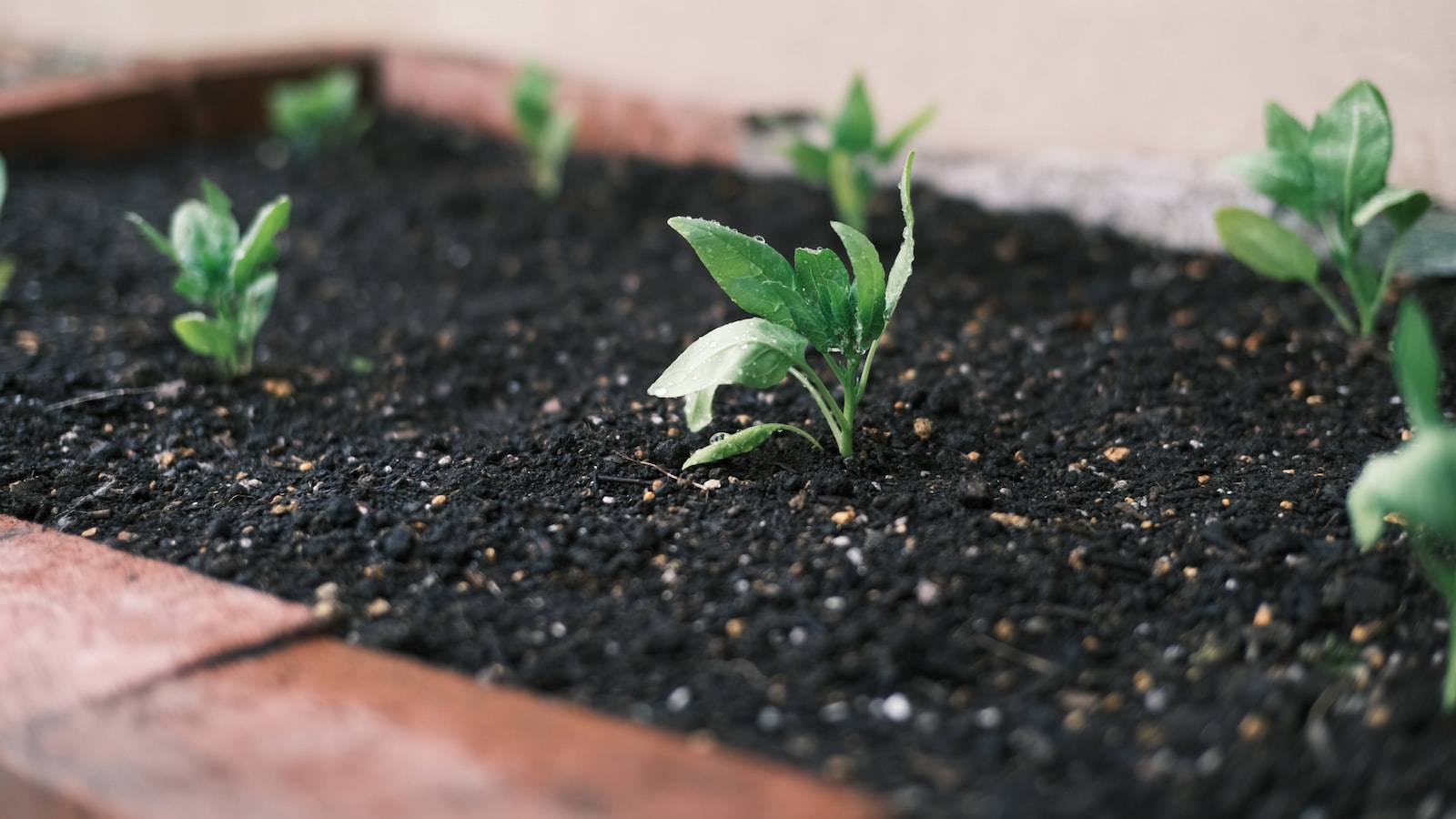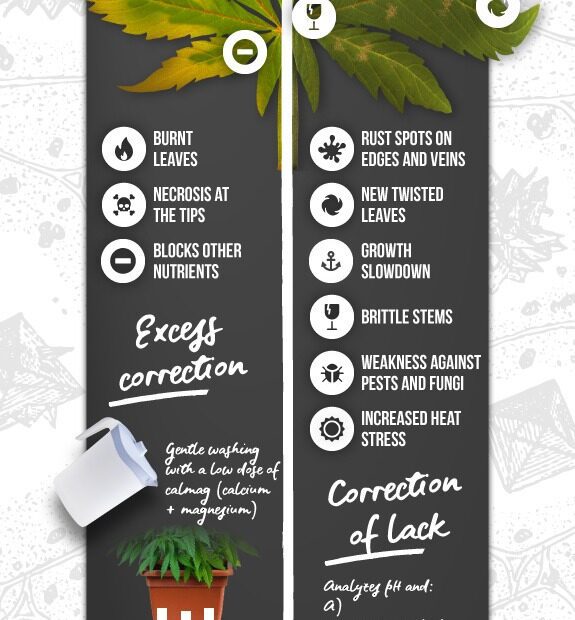An Enigmatic Encounter: Unveiling Nature’s Calcium Conundrum
Assessing the Calcium Levels: Understanding the Extent of the Soil Imbalance
Dealing with an Overabundance of Calcium in Soil
When it comes to soil health, striking the right balance is crucial. Calcium is an essential nutrient for plant growth, providing structural support and aiding in nutrient uptake. However, when calcium levels become excessive, it can cause imbalances and hinder overall plant health. If you find yourself facing this issue, don’t fret! There are a few effective ways to correct too much calcium in soil:
1. Soil Testing:
Before taking any corrective measures, it is important to have your soil tested to determine the exact calcium content. This will allow you to gauge the severity of the imbalance and devise an appropriate plan of action.
2. Amending with Organic Matter:
Introducing organic matter such as compost or well-rotted manure can help to reduce soil pH levels, thus lowering the excessive calcium present. The decomposed materials release acids that neutralize the alkalinity caused by high calcium, restoring balance to the soil.
3. Leaching:
If the calcium imbalance is not too severe, leaching can be employed as a corrective measure. This involves thoroughly watering the affected area, allowing excess calcium to be washed away. However, caution should be exercised to prevent overwatering, which can lead to other issues.
| Features | Tips |
|---|---|
| Soil Testing | – Use a reputable laboratory for accurate results – Follow the recommended sampling procedures |
| Amending with Organic Matter | – Apply organic matter evenly across the affected area – Ensure proper decomposition before usage |
| Leaching | – Water deeply to encourage leaching – Monitor soil moisture levels to prevent overwatering |
By implementing these corrective measures, you can gradually restore the balance of calcium in your soil, leading to healthier plants and improved overall plant growth. Remember, understanding the extent of the soil imbalance is key to effectively addressing the issue and promoting a thriving garden or crop!

Optimal pH Levels: Balancing Soil Acidity to Alleviate Calcium Overload
When it comes to creating an ideal environment for plant growth, maintaining optimal pH levels in the soil is key. One common issue that gardeners may face is an imbalance in soil acidity, resulting in an overload of calcium. This excess calcium can hinder the absorption of other essential nutrients by plants, ultimately affecting their overall health and productivity.
To correct a high calcium content in the soil, several strategies can be employed. Firstly, testing the pH levels of the soil is crucial to determine the exact extent of the imbalance. Once identified, it is necessary to make adjustments to rebalance the acidity. This can be achieved through various methods, such as:
| Feature/Tips | Description |
| 1.️ Lime application | By adding lime to the soil, the pH level can be increased, counteracting the excessive acidity caused by the calcium overload. Lime helps in neutralizing the soil, allowing plants to efficiently absorb the necessary nutrients. |
| 2.️ Introducing organic matter | By incorporating organic matter such as compost or manure into the soil, you can improve its overall structure and promote a more balanced pH level. Organic matter helps to buffer acidity and provides essential nutrients, ensuring optimal plant growth. |
| 3.️ Amending with sulfur | Applying sulfur to the soil can help reduce the pH levels, counteracting the excess calcium. Sulfur aids in acidifying the soil, correcting the alkalinity caused by the calcium overload and facilitating nutrient uptake by plants. |
By implementing these strategies, gardeners can effectively rectify excessive calcium levels in the soil, ensuring that plants receive the necessary nutrients for healthy growth and development. Regular soil testing and maintenance are crucial to maintaining optimal pH levels and preventing future imbalances that may hinder plant productivity.

Amending Soil Composition: Effective Techniques for Calcium Reduction
<p>
Dealing with excessive calcium levels in your soil can be a tricky task, but fear not! There are several effective techniques that can help you correct this issue and restore the balance in your garden. Here are some creative tips to reduce calcium levels and <a href="https://up-gardening.com/when-to-plant-pumpkin-seeds-in-michigan/" title="When to Plant Pumpkin Seeds in Michigan">ensure optimal growth</a> for your plants.
</p>
<p>
<table>
<tr>
<th>Technique</th>
<th>Features</th>
</tr>
<tr>
<td>Balanced Fertilizers</td>
<td>Use fertilizers with balanced N-P-K ratios to avoid overloading the soil with calcium.</td>
</tr>
<tr>
<td>Soil Amendment</td>
<td>Add organic matter such as compost or peat moss to help balance and lower calcium levels.</td>
</tr>
<tr>
<td>Acidify the Soil</td>
<td>Apply sulfur or acidic fertilizers to lower pH levels and reduce calcium availability.</td>
</tr>
</table>
</p>
<p>
Another effective technique is using crops that naturally uptake calcium to deplete the excess in your soil. Plants like strawberries, sunflowers, or potatoes can absorb calcium, helping to reduce its concentration over time. Additionally, practicing crop rotation can prevent excessive calcium buildup in specific areas of your garden. Remember to monitor your soil regularly to accurately gauge its calcium levels and adjust your strategies accordingly.
</p>
Sustainable Planting Practices: Promoting Long-Term Calcium Management in Soil
When it comes to sustainable planting practices, it is crucial to promote long-term calcium management in soil. However, sometimes the calcium levels in soil can become imbalanced, leading to various issues for plants. If you find yourself dealing with too much calcium in your soil, fear not! There are several effective ways to correct this imbalance and create an optimal growing environment for your plants.
One method to correct excess calcium in soil is through the use of soil amendments:
| Features/Tips | Benefits |
|---|---|
| Add organic matter such as compost or manure to the soil | Helps in balancing the calcium levels and improving overall soil structure |
| Apply gypsum or lime to adjust the pH of the soil | These amendments can help in reducing calcium availability |
| Consider using acidifying fertilizers | These fertilizers help in lowering pH levels and limiting calcium uptake |
Another approach is to implement proper irrigation and drainage practices:
- Avoid overwatering, as excess water can leach calcium deeper into the soil
- Ensure proper drainage to prevent waterlogged soil, which can lead to calcium buildup
- Use regular soil testing to monitor calcium levels and adjust accordingly
By following these sustainable planting practices and implementing these tips, you can effectively correct excessive calcium levels in your soil, optimizing your plant’s growth and ensuring long-term calcium management.
Frequently Asked Questions
Q: Can I fix the problem of excess calcium in my soil with a magical spell?
A: Unfortunately, no amount of sorcery can rectify an excessive calcium problem in your soil. Stick to real-life solutions for the best results!
Q: Will playing classical music to my plants help reduce the calcium levels in the soil?
A: While your plants may appreciate a soothing serenade, classical music won’t miraculously lower the calcium content in your soil. Turn up the volume on practical methods instead!
Q: Can burying a lucky charm in my garden help counterbalance excessive calcium in the soil?
A: As wonderful as lucky charms can be, they won’t provide the soil amendments needed to regulate calcium levels. Leave the good luck to other areas of your life and focus on scientific solutions for treating excess calcium. As we reach the conclusion of our journey through the world of soil rejuvenation, we hope that this article has shed light on the delicate balance our beloved earth requires. Tackling the issue of excessive calcium in soil may seem like a daunting task, but fear not, for nature always has a way of correcting itself, and we are here to assist it on its path.
Remember, the key to restoring harmony lies within understanding the root cause of the problem. Whether it’s due to overzealous fertilization or the mysterious ways of Mother Nature herself, too much calcium can disrupt the equilibrium and hinder the growth of our green friends. But fret not, as we unveil the secrets to rectifying this imbalance.
Firstly, let us pay tribute to the importance of soil testing. By conducting a comprehensive analysis of your soil composition, you empower yourself with knowledge, the most potent weapon in your rejuvenation arsenal. Armed with this information, you can embark on a targeted approach to tip the scales back in your favor.
Our guide has emphasized the significance of organic matter as the ultimate hero in the fight against excessive calcium. Incorporating organic amendments, such as compost or well-rotted manure, into the soil not only helps in balancing calcium levels but also promotes overall soil health. And remember, diversity is key! Mixing different organic materials ensures a harmonious blend of nutrients, offering a nourishing environment for your plants to thrive.
Maintaining a moderate pH level is another crucial aspect to consider, as it directly influences the availability of nutrients to your precious flora. Adjusting the pH, if necessary, can be achieved through various means, such as incorporating acidic organic matter or applying specific amendments. The goal here is to create a neutral or slightly acidic environment that encourages plants to absorb calcium at the right pace.
Ah, my fellow earth enthusiasts, we have reached the end of our journey. As we bid farewell to this informative quest, we hope you feel armed with the culinary secrets of soil correction. Remember, patience and persistence are the guiding virtues in this pursuit. The journey may not be immediate, but with love, care, and the gentle dance between science and nature, your soil shall once again bloom with abundant life.
Happy gardening, dear readers, and always remember to tread lightly on this fragile tapestry we call home.
- When to Put Weed and Feed on Lawn in Michigan - October 16, 2023
- When to Fertilize Potatoes Plants - October 16, 2023
- Can You Plant Clover in the Spring - October 16, 2023
Contents
- 1 Assessing the Calcium Levels: Understanding the Extent of the Soil Imbalance
- 2 Dealing with an Overabundance of Calcium in Soil
- 3 Optimal pH Levels: Balancing Soil Acidity to Alleviate Calcium Overload
- 4 Amending Soil Composition: Effective Techniques for Calcium Reduction
- 5 Sustainable Planting Practices: Promoting Long-Term Calcium Management in Soil
- 6 Frequently Asked Questions

